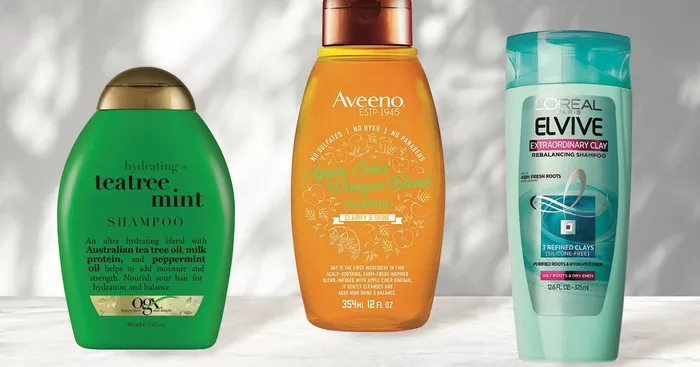In the pursuit of the perfect hairstyle, our hair often faces the unintended consequences of styling tools and chemical treatments, leaving us with singed and damaged strands. If you find yourself in a desperate quest to restore the health and vitality of your hair, worry not. This comprehensive guide will provide you with professional insights on how to repair singed hair effectively, ensuring your locks regain their natural luster and strength.
1. Understanding the Causes of Singed Hair
Before delving into the solutions, it’s crucial to comprehend the root causes of singed hair. Hair damage can result from excessive heat styling, chemical processing, or exposure to environmental factors. Identifying the source allows for targeted repair strategies tailored to your specific needs.
a. Heat Styling Overload: Excessive use of flat irons, curling wands, and blow dryers can strip hair of its natural moisture, leading to singeing. Opt for heat-free styles whenever possible.
b. Chemical Culprits: Harsh chemicals in hair dyes, relaxers, and perms can weaken the hair structure, causing it to become brittle and prone to damage. Consider gentler alternatives and ensure proper conditioning after chemical treatments.
c. Environmental Impact: Environmental factors such as sun exposure, pollution, and harsh weather conditions contribute to hair damage. Shield your hair with protective styles or use products designed to combat environmental stressors.
2. Revitalizing with Deep Conditioning Treatments
One of the most effective ways to repair singed hair is through regular deep conditioning treatments. These nourishing sessions help replenish lost moisture, strengthen the hair shaft, and improve overall texture.
a. Moisture-Rich Formulas: Choose deep conditioners enriched with hydrating ingredients like argan oil, shea butter, and keratin. These components penetrate the hair cuticle, restoring moisture and enhancing resilience.
b. Weekly Rituals: Make deep conditioning a weekly ritual to provide consistent care for your damaged strands. Leave the treatment on for at least 20 minutes to allow the ingredients to work their magic.
c. DIY Options: Consider creating your own deep conditioning masks using natural ingredients such as avocado, coconut oil, and honey. These DIY treatments can offer a cost-effective and chemical-free alternative.
3. Trim Away the Damage
Sometimes, the most effective way to repair singed hair is through strategic trimming. Regular trims eliminate split ends and prevent further damage from traveling up the hair shaft.
a. Scheduled Salon Visits: Schedule regular appointments with your hairstylist for minor trims. This ensures that damaged ends are promptly removed, promoting healthier hair growth.
b. At-Home Maintenance: Invest in quality hair scissors for at-home maintenance between salon visits. Snipping away split ends on a regular basis prevents further deterioration.
c. Gradual Length Adjustment: If the damage is extensive, consider a gradual length adjustment to remove the most compromised sections. Embrace shorter styles that showcase your hair’s natural beauty.
4. Adopting a Gentle Hair Care Routine
Transitioning to a gentle hair care routine is paramount in the journey to repair singed hair. Harsh products can exacerbate damage, while a carefully curated routine promotes healing and prevents future issues.
a. Sulfate-Free Shampoos: Choose sulfate-free shampoos to cleanse your hair without stripping away essential oils. Sulfates can be overly harsh and contribute to further damage.
b. Wide-Toothed Combs: Opt for wide-toothed combs to detangle wet hair gently. Wet strands are more susceptible to breakage, and a wide-toothed comb minimizes stress on the hair shaft.
c. Silk Pillowcases: Swap out cotton pillowcases for silk alternatives to reduce friction during sleep. This simple switch minimizes hair breakage and tangling.
5. Nutritional Support for Hair Health
Enhancing your diet with essential nutrients plays a crucial role in repairing singed hair from the inside out. A well-balanced diet ensures your hair receives the necessary vitamins and minerals for optimal growth and resilience.
a. Protein-Packed Diet: Include protein-rich foods like lean meats, eggs, and legumes to support the hair’s protein structure (keratin) and promote strength.
b. Omega-3 Fatty Acids: Incorporate sources of omega-3 fatty acids, such as fish, flaxseeds, and walnuts, to nourish the scalp and improve hair elasticity.
c. Vitamins and Minerals: Consume a variety of fruits and vegetables rich in vitamins A, C, and E, as well as minerals like zinc and iron, to promote overall hair health.
6. Seeking Professional Guidance
In severe cases of hair singeing, seeking the advice of a professional trichologist or dermatologist is crucial. These specialists can assess the extent of damage, provide personalized recommendations, and offer advanced treatments to expedite the recovery process.
a. Diagnostic Assessments: Trichologists conduct thorough assessments to identify underlying issues contributing to hair damage, ensuring a targeted and effective treatment plan.
b. Clinical Treatments: Advanced clinical treatments, such as laser therapy and scalp massages, may be recommended by professionals to stimulate hair growth and enhance overall scalp health.
c. Prescription Medications: In some cases, prescription medications or topical treatments may be prescribed to address specific hair and scalp conditions contributing to singed hair.
See Also: How to Tie Long Hair While Sleeping: A Step-By-Step Guide
In Conclusion
By incorporating these professional tips into your hair care routine, you can embark on a journey to repair singed hair and restore your locks to their former glory. Remember, consistency is key, and patience is a virtue when it comes to nurturing your hair back to health.


